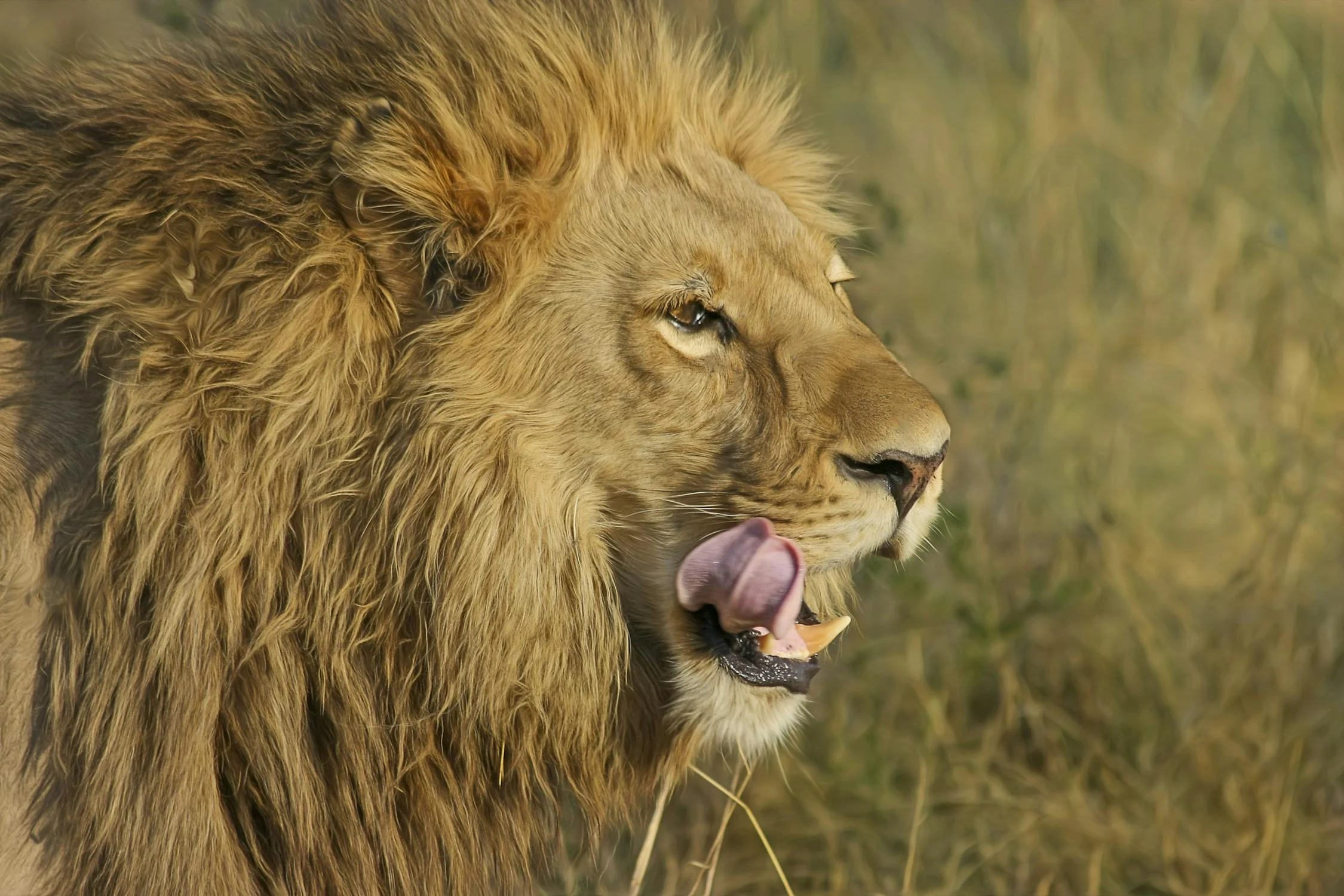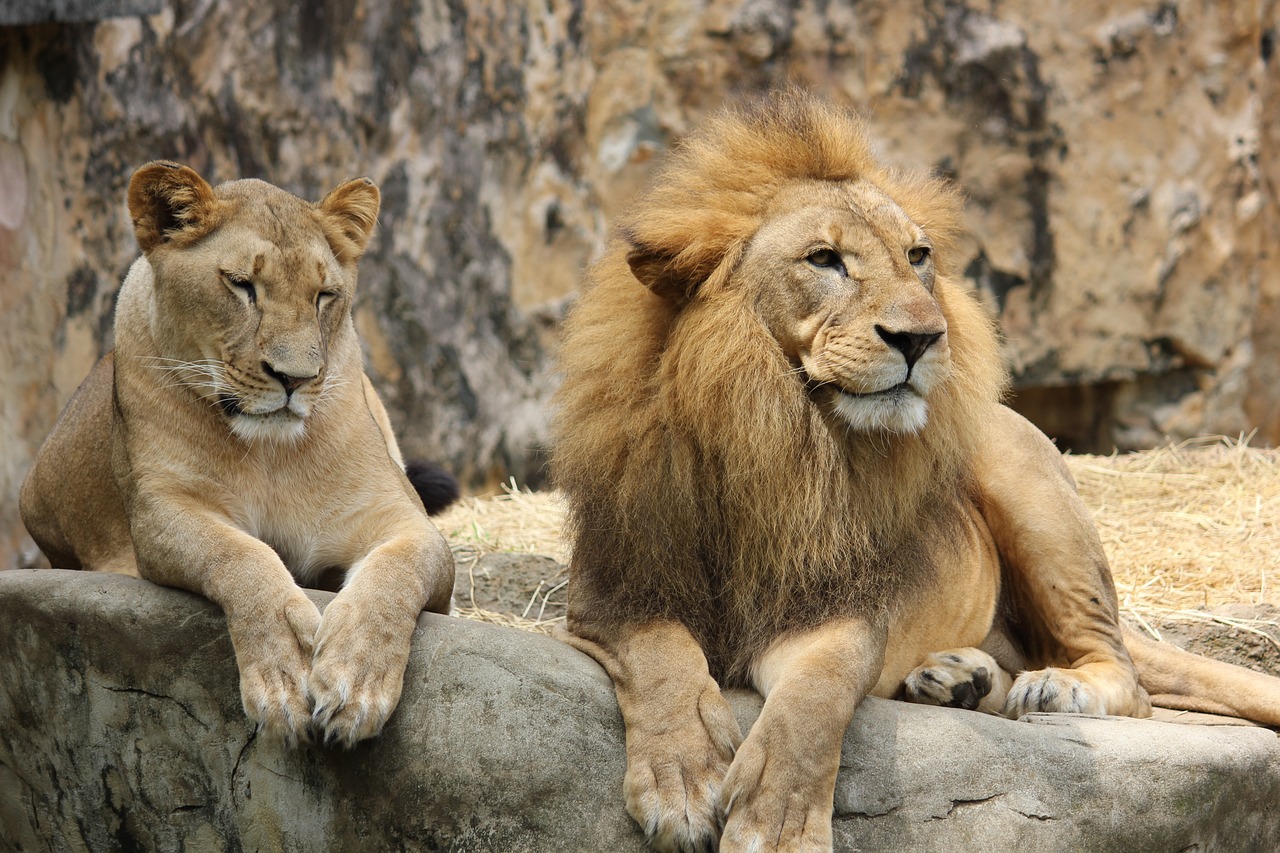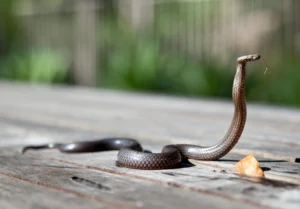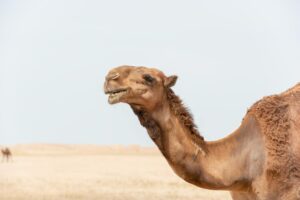The lion , king of the jungle and a symbol of courage

The lion, often referred to as the “king of the jungle,” is a majestic and powerful big cat that captivates our imagination. With its iconic golden mane and muscular build, the lion is a symbol of strength and courage.
Lions are primarily found in the grasslands and savannas of Africa, where they live in social groups called prides. These prides consist of multiple females, their offspring, and a few dominant males. Each pride has a defined territory that they fiercely protects from other prides
Known for their impressive hunting skills, lions are apex predators and primarily feed on large herbivores such as zebras, wildebeests, and buffalo. They are skilled hunters, using their strength, speed, and teamwork to bring down their prey.
In addition to their hunting prowess, lions are also known for their distinctive roar, which can be heard from miles away. Roaring serves as a form of communication between pride members and helps establish their presence in the territory.
Main Lion Habitats

Lions are primarily found in sub-Saharan Africa, with their habitats spanning across various countries. Some of the main lion habitats include:
Serengeti National Park, Tanzania: This vast savanna ecosystem is home to a significant population of lions. It is renowned for its annual wildebeest migration, which provides abundant prey for the lions.
Maasai Mara National Reserve, Kenya: Located in southwestern Kenya, Maasai Mara is known for its diverse wildlife, including a thriving lion population. It is a popular destination for wildlife enthusiasts and it offers excellent opportunities for lion sightings.
Kruger National Park, South Africa: As one of Africa’s largest game reserves, Kruger National Park provides a protected habitat for lions. It is known for its high density of wildlife, including the iconic Big Five.
Okavango Delta, Botswana: This unique inland delta in Botswana is a haven for wildlife, including lions. The delta’s lush vegetation and waterways attract a variety of prey species, making it an ideal hunting ground for lions.
Hwange National Park, Zimbabwe: Situated in western Zimbabwe, Hwange National Park is home to a significant lion population. It offers diverse habitats, ranging from grasslands to woodlands, providing ample opportunities for lions to thrive.
Masai Mara-Serengeti Ecosystem, Kenya and Tanzania: This transboundary ecosystem spans across both Kenya and Tanzania, encompassing the Maasai Mara and Serengeti. It supports a large population of lions and is famous for its annual wildebeest migration.
Reproduction is a fundamental aspect of the lion’s life cycle

the lion’s reproductive process is a fascinating and essential aspect of their life cycle. From courtship and mating to gestation and the birth of cubs, each step plays a crucial role in the continuation of the species. Lions are polygamous animals, with dominant males mating with multiple females within their pride.
The courtship period allows the male and female lions to establish a bond before mating takes place. Once mating occurs, the female lion undergoes a gestation period of around 100 to 110 days. During this time, she carries the developing cubs in her womb.
The birth of lion cubs is an exciting event, with lionesses usually giving birth to a litter of one to six cubs. The lioness seeks out a safe den or area to give birth, providing a protected environment for the vulnerable cubs. The entire pride, including the dominant male, participates in the care and protection of the cubs.
The synchronized reproductive cycles of lionesses within a pride ensure that multiple females give birth around the same time. This cooperation allows the lionesses to support each other in raising the cubs, sharing nursing duties and providing protection.
Reproduction is vital for the survival and growth of lion populations. The successful breeding and rearing of cubs contribute to the long-term survival of the species. Lions’ social structure, with dominant males, lionesses, and their offspring forming prides, showcases the importance of cooperation and shared responsibilities in their reproductive success.
Understanding the intricacies of lion reproduction helps us appreciate the complex dynamics and behaviors of these magnificent creatures. It also highlights the significance of conservation efforts to protect and preserve lion populations for future generations to admire and cherish.
apex predators, lions play a crucial role in maintaining the balance of ecosystems. They help control the population of herbivores, which in turn prevents overgrazing and promotes the health of vegetation. Additionally, lions scavenge on carrion, further contributing to the recycling of nutrients in the ecosystem.
Unfortunately, lions are facing numerous threats to their survival. Habitat loss, human-wildlife conflict, and poaching are some of the major challenges they face. Conservation efforts are underway to protect and preserve lion populations, including the establishment of protected areas and anti-poaching initiatives.
In conclusion, lions are magnificent creatures that symbolize strength, courage, and the beauty of the natural world. It is important for us to appreciate and protect these majestic animals to ensure their survival for future generations.




